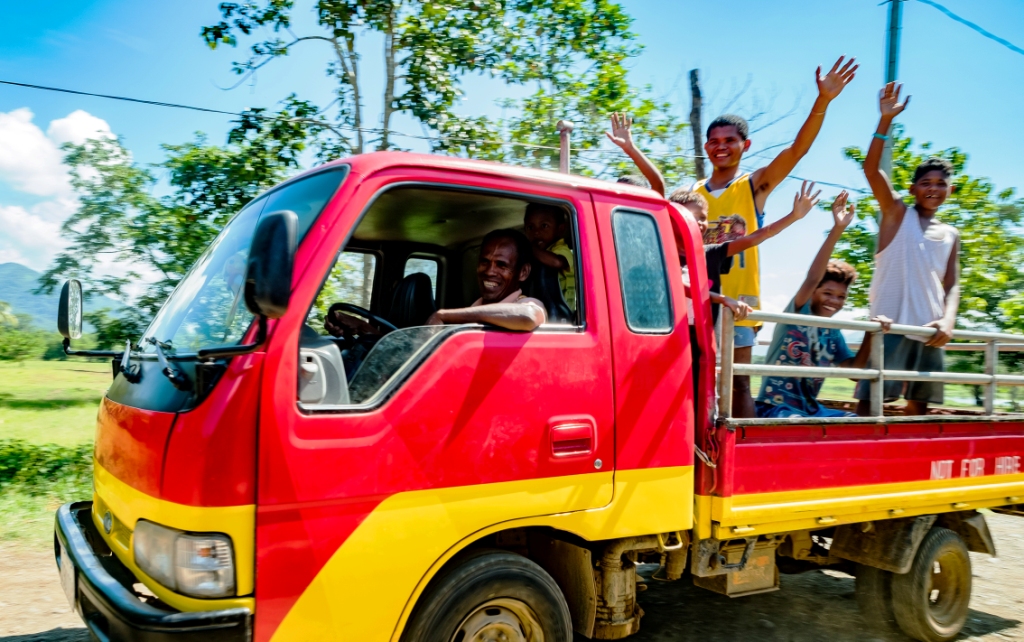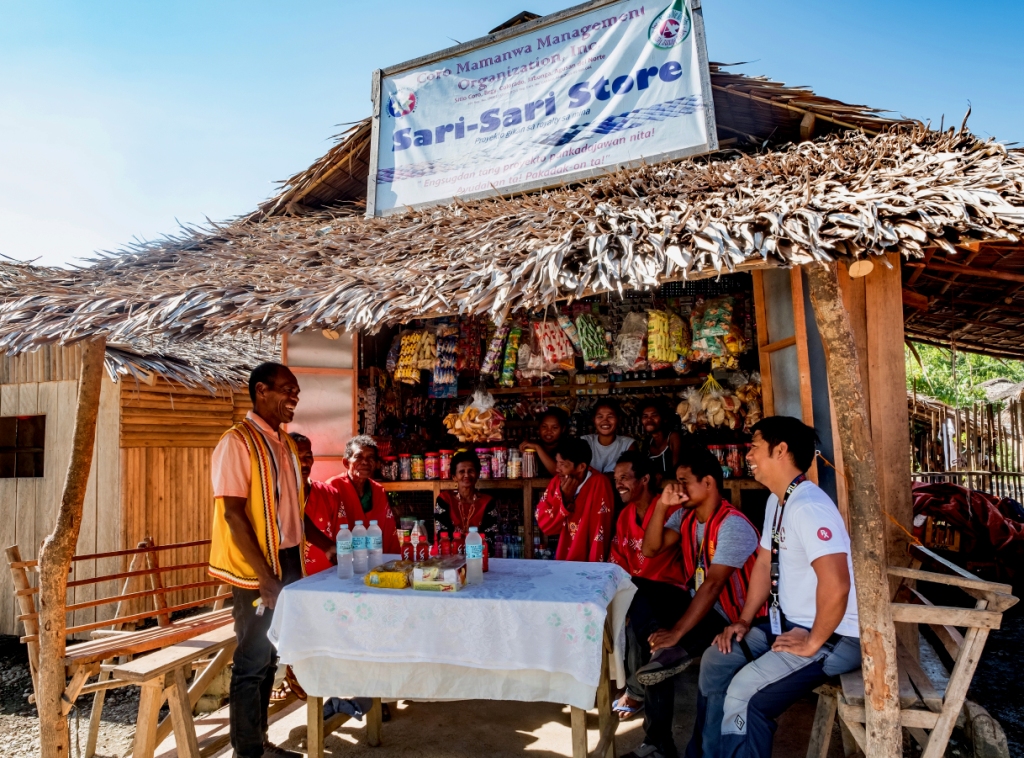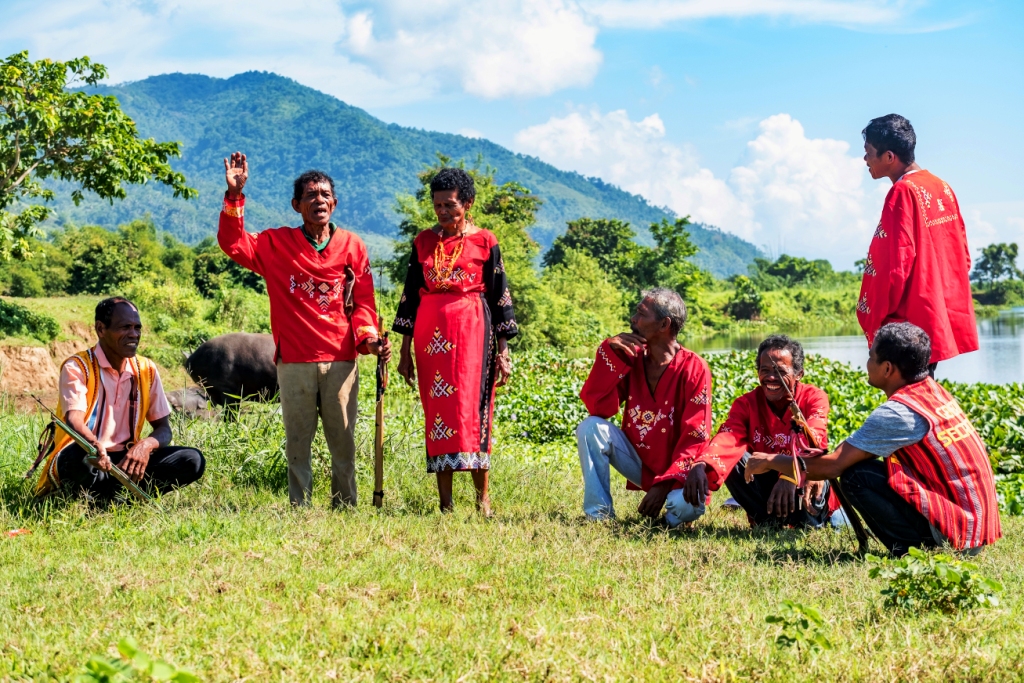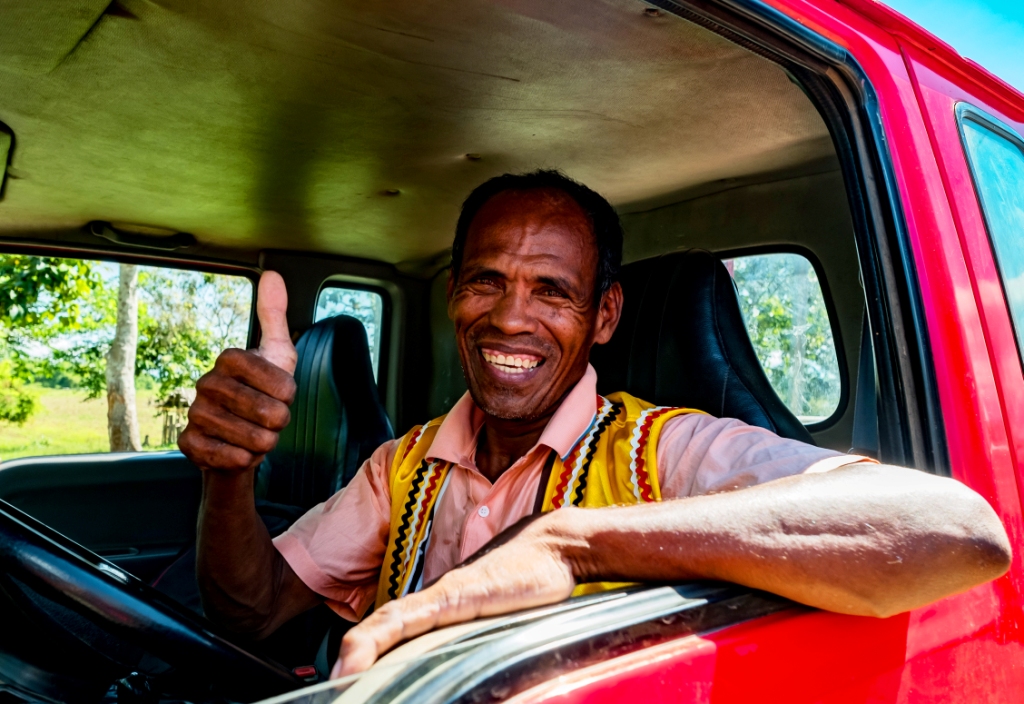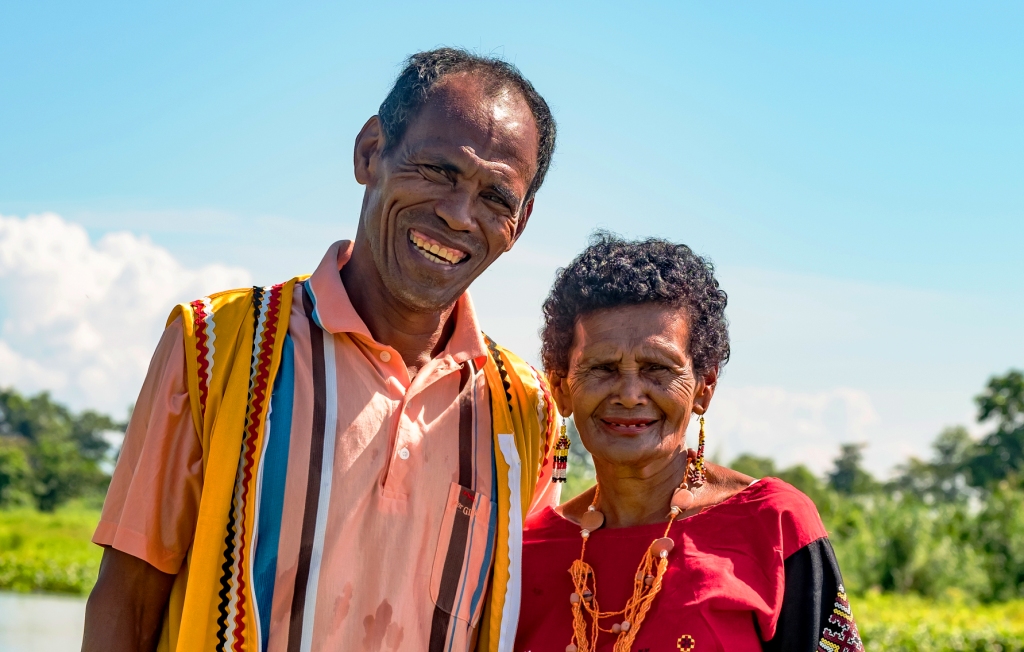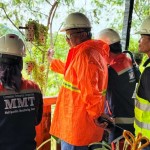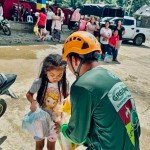-
Mobilizing progress. The vehicles acquired by the Agata Mamanwa Tribal Organization and Coro Mamanwa Management Association speed-up the delivery of goods to tribe-owned sari-sari stores, rice and feeds center, and other livelihood establishments in the community. (in photo): Datu Bebe take young Mamanwas on a ride in their new “Bongo.”
-
Tribal Leader Datu Rogelio Bebe (extreme Left) and members of the Coro Mamanwa Management Organization of Barangay Colorado feel more secure with their new sari-sari store and the acquisition of delivery vehicles.
-
The tribal ownership. The council of leaders remembers their traditional ways of hunting and fishing along Kalinawan River and likewise take pride in the opportunity the community shares with AMVI.
-
Chief approves. Datu Bebe keeps the faith as he smiles in the improvement of his community and the preservation of their cultural heritage.
-
The couple mirrors the happiness of every Mamanwa that thrives under AMVI’s efforts to help them achieve their right to self-determination. The IP Royalty Fund’s Community Resource Development Program and Social Development and Management Program help make this happen.
The successful implementation of AMVI’s Community Royalty Development Program
Tubay, Agusan del Norte / July 2016 – TVIRD’s Agata Mining Ventures Inc. (AMVI) has four Indigenous Peoples (IP) sectors within its 4,995-hectare Mineral Processing Sharing Agreement (MPSA) area who are receiving royalty fees generated by the company’s mining operations. These are the Mamanwa Tribal Management Organization, Coro Mamanwa Management Organization, Agata Mamanwa Tribal Organization and Mamanwa-Manobo Mapaso Tribal Sectoral Organization – all of whom comprise a population of more than 600. And since receiving royalties from AMVI – in addition to employment for some of their fellow lumads – the Mamanwas have enhanced their way of life through sustainable livelihood programs ushered by the Agata Nickel Project.
To date, the Mamanwas have established two sari-sari (general merchandise) community stores and funded the improvement of their Tribal Hall through AMVI’s Community Royalty Development Plan (CRDP). They likewise purchased a Bongo Transport Vehicle, which is used for delivering goods – in addition to securing an TESDA NC2 Driver Training for their designated drivers. The tribal organization also started a rice and feeds supply center as well as acquired a new 10-seater “Multicab” to transport their tribesmen. In the field of agroforestry, the tribe also invested its funds in a four-hectare plantation with Falcata, Abaca, Mahogany and fruit-bearing trees.
“The presence of the mining company brought us new hope. It gave us confidence and the opportunity to improve our lives, send our children to school and secure job opportunities,” expressed Datu Rogelio Bebe.
Tribal organization officer Remy Capilitan said the assistance of AMVI “Provided a better alternative to the hazards and unsure income from small-scale mining. The company has been sensitive to our needs and committed to their responsibility since the start of their operations.”
AMVI’s best practices
During the last Mine Rehabilitation Fund Committee (MRFC) meeting, AMVI’s CRDP was highlighted by CARAGA Mines and Geosciences Bureau Regional Director Engr. Alilo C. Ensomo, Jr. as one of the “best practices” implemented across the country.
“The CRDP programs implemented by Agata’s Community Relations Department has a very significant involvement towards responsible mining, especially in the distribution of the IP communities’ royalty fund. With the CRDP, the IP community members can benefit and their livelihood investments can be sustained in the process,” commended Director Ensomo.
“Such engagement is deemed ‘potentially replicable’ in other mining companies operating in the country. And we recommend the Central Office to adapt and further develop this kind of intervention in the IP organizations,” he added.
The Extra Mile
The IP royalty fund enables the communities to aspire for a better future, tap livelihood opportunities, and establish sustainable ventures – and not just a means to pay loans or debts. The AMVI Community Relations team expands its commitment to establishing programs that aim to respond to each IP communities’ potentials and resources.
The baseline studies were initiated with numerous consultations and workshops with the tribal leaders. It brought to light that most of the tribes’ funds were collateralized loans from local financiers at high interest rates, making it very difficult for the Mamanwas to generate livelihood – or even pay back the principal amounts.
AMVI negotiated on behalf of the tribe in order to reduce the loan interest to 2%, thereby providing an opportunity for the tribal organizations to engage in livelihood opportunities with their remaining funds.
Financial management
Following a consensus with the tribe, the current adjusted royalty distribution is: 50% for community development and 50% for governance.
Community development is composed of projects and activities on health and sanitation, particularly potable water (15%), education (16%), support to Ancestral Domain Sustainable Development and Protection Plan (ADSDPP) (9%), livelihood and environment programs (30%), housing (8%), water systems (6%), sports development and socio-cultural activities (5%), monitoring and evaluation (8%), and peace and order (3%).
Meantime, governance is comprised of Tribal Hall construction and administrative support (12%), stipends for members and leaders (83%), and calamity and reserve funds (5%).
The Mamanwas of AMVI
Some 181 IP families living in 133 households have been recorded as of April 2015 – majority of whom belong to the Mamanwa Tribe. These communities reside in Santiago and Jabonga Municipalities in Agusan del Norte and belong to the oldest tribes in the country.
Mamanwas also bear a striking physical resemblance to the Negritos and are believed to be descendants of the original settlers of the Philippines.
*******

